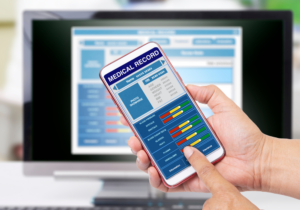The landscape of medical education is transforming, with cutting-edge technology at the forefront of this change. Today, we venture into the world of medical training devices—a sphere where innovation meets practicality, significantly enhancing the learning experience for medical students and healthcare professionals alike. From simulation models to the immersive realms of virtual and augmented reality, these tools are not just future trends but essential components of contemporary medical education.
 Introduction to Medical Training Devices
Introduction to Medical Training Devices
Medical training devices encompass a wide range of technological solutions designed to simulate clinical scenarios, procedures, and patient interactions. These devices offer hands-on experience without the risks associated with real-life patient care, paving the way for a safe, effective learning environment. The evolution of these tools from basic anatomical models to sophisticated digital simulations marks a significant leap in how medical knowledge is acquired and applied.
Importance of Using Advanced Technology in Medical Education
Incorporating advanced technology into medical education bridges the gap between theoretical knowledge and practical skills. It allows for repeated practice in a controlled environment, immediate feedback, and a personalized learning pace—factors crucial for building confidence and competence in clinical settings. Furthermore, such technology can replicate rare, complex, or high-stakes medical situations that students might not otherwise encounter, preparing them for a wider range of scenarios in their professional lives.
Types of Medical Training Devices: Simulation Models, Virtual Reality, and Augmented Reality
Simulation Models
Traditional yet increasingly sophisticated, physical simulation models (manikins) offer realistic training experiences for procedures ranging from CPR to laparoscopic surgery. These models have evolved to feature lifelike anatomy, responsive feedback mechanisms, and even programmable scenarios to challenge and test a student’s skills under varying conditions.
Virtual Reality (VR)
VR in medical training immerses students in a fully digital environment, where they can perform surgeries, diagnose patient cases, or explore the human anatomy in 3D. This technology provides an unparalleled depth of realism in a completely safe setting, allowing for error and correction without real-world consequences.
 Augmented Reality (AR)
Augmented Reality (AR)
AR overlays digital information onto the real world, enhancing books, models, or even patients with interactive, data-rich content. It’s particularly useful for visualizing anatomical layers beneath the skin or guiding the precise execution of procedures with real-time, holographic information.
Future Trends in Medical Training Technology
The future of medical training devices lies in further personalization, interoperability, and immersion. Artificial intelligence is expected to play a significant role, tailoring scenarios to individual learning needs and predicting areas where students could benefit from additional practice. Integration with medical records systems and diagnostic tools will enhance the realism of training simulations, providing a seamless transition between learning environments and actual clinical practice.
How Medical Students and Healthcare Professionals Can Access and Utilize These Devices
Access to these advanced training tools is becoming increasingly commonplace in medical schools and healthcare institutions worldwide. Many organizations offer grants or partnerships with tech companies to integrate these devices into their curriculum. Additionally, online platforms and apps are making VR and AR more accessible to individual learners, enabling them to experience sophisticated training outside traditional settings.
Medical training devices stand at the crossroads of technology and education, embodying the potential to transform how healthcare professionals learn and prepare for their roles. By offering safe, scalable, and sophisticated training opportunities, these devices not only enhance medical education but also promise to improve patient care outcomes. As we continue to explore and expand the possibilities within this domain, one thing remains clear—the future of healthcare education is inherently linked to the advancement and adoption of medical training devices.

